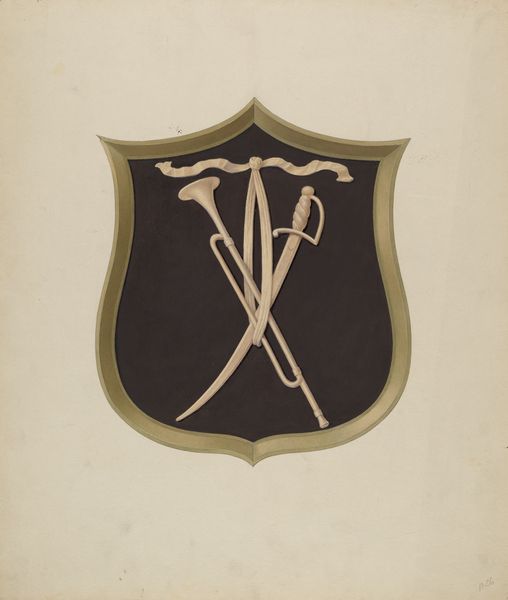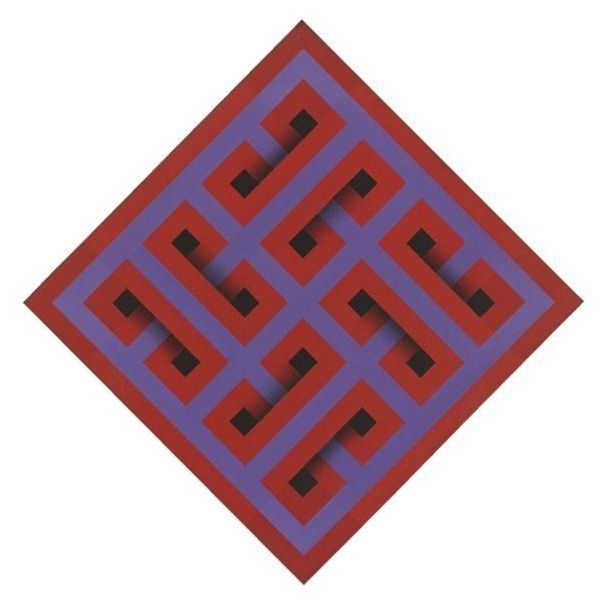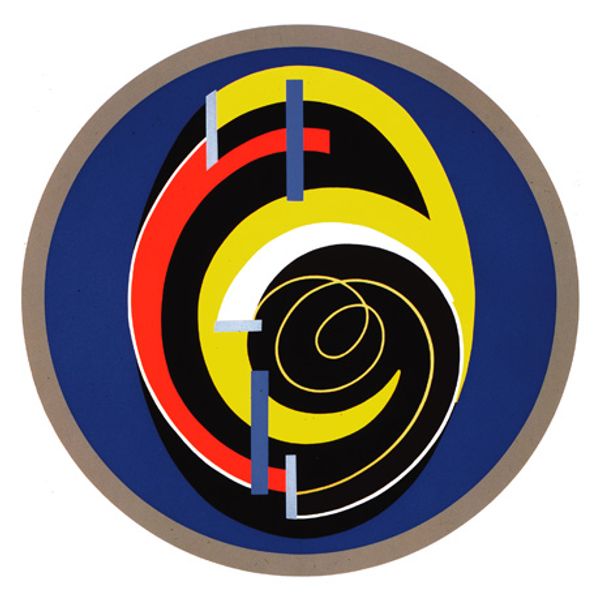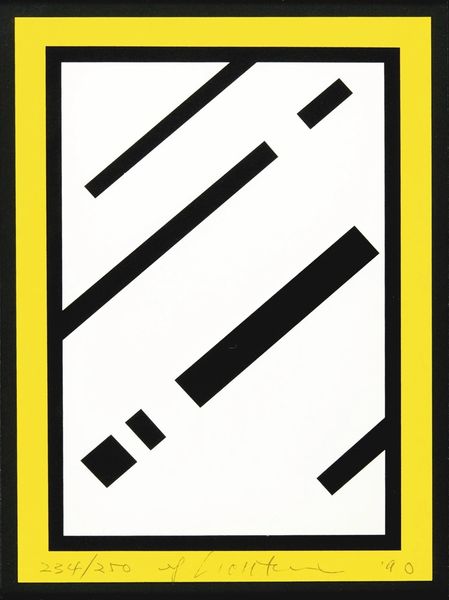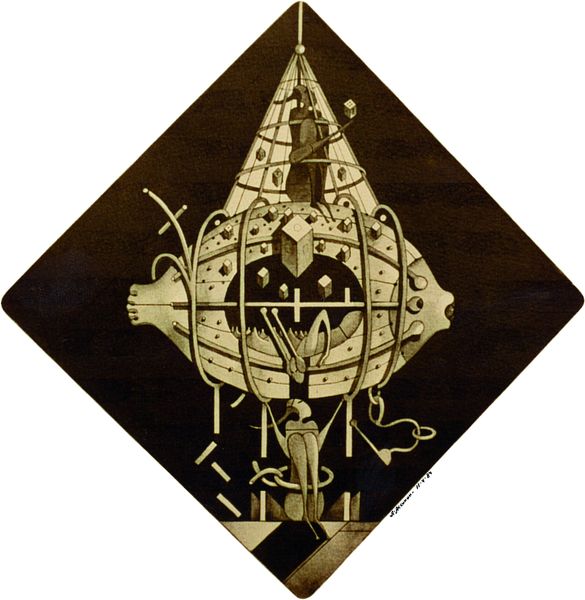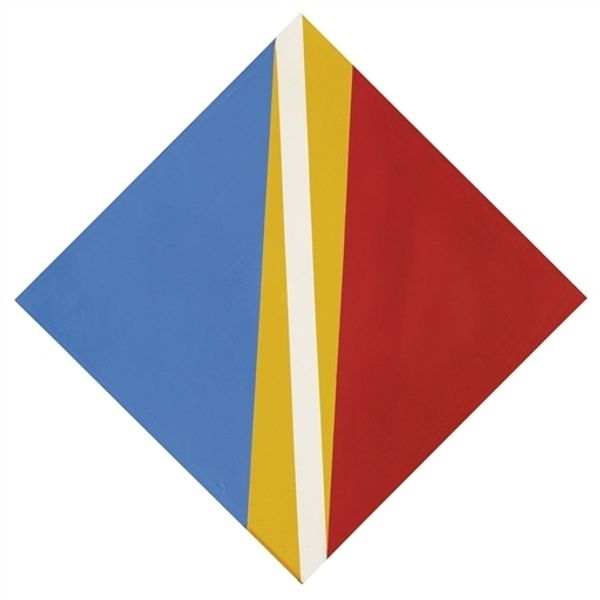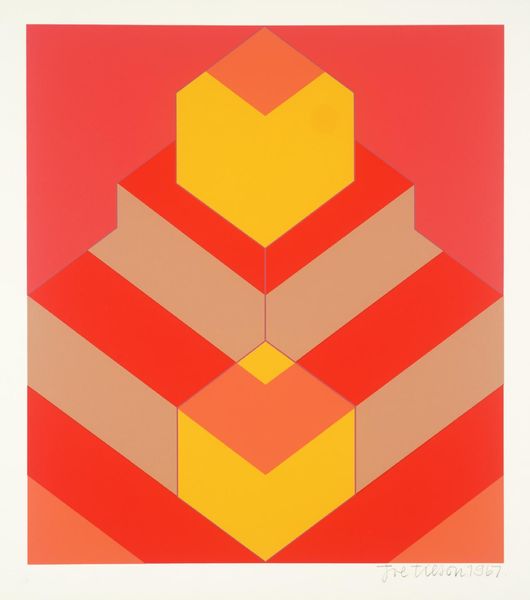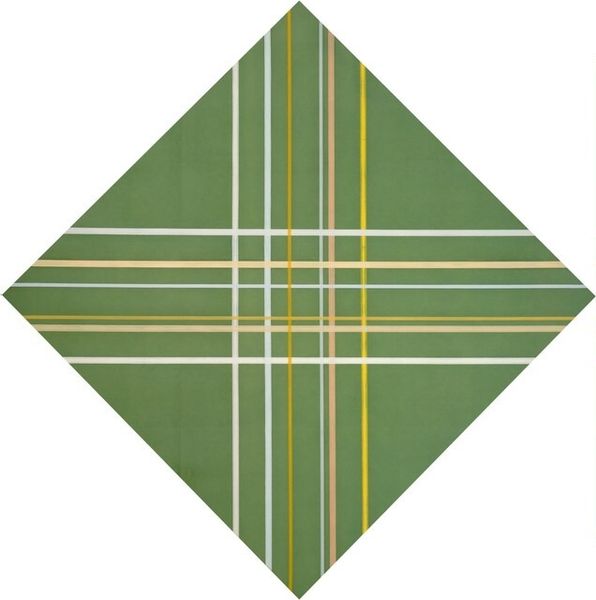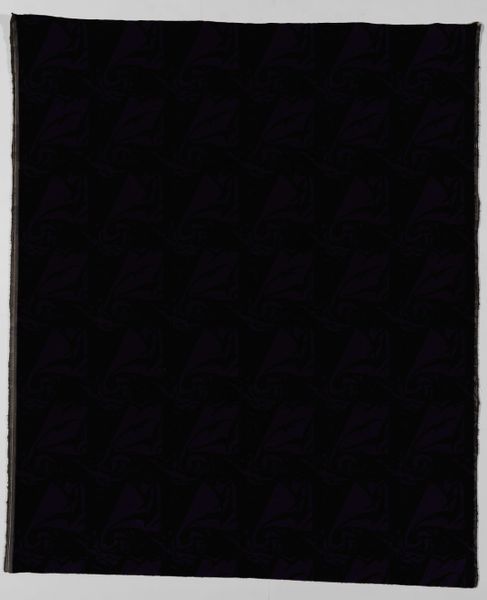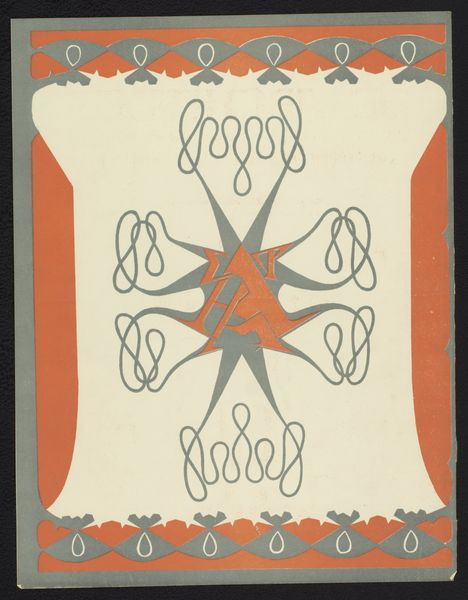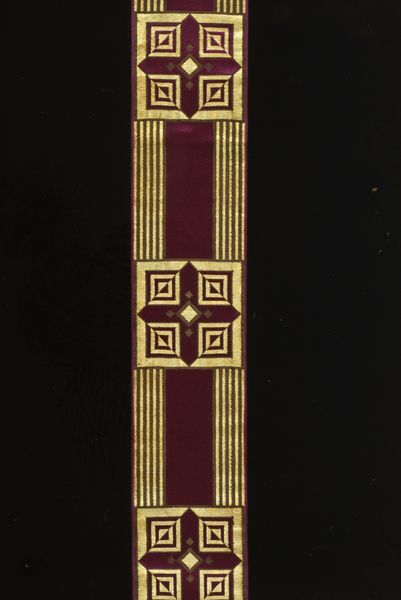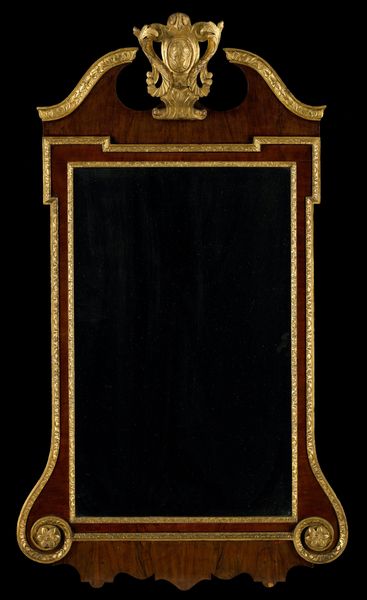
painting, acrylic-paint
#
painting
#
op art
#
acrylic-paint
#
geometric
#
abstraction
#
pop-art
#
hard-edge-painting
Copyright: Modern Artists: Artvee
Editor: This acrylic painting, "8" by Robert Indiana, was created in 1962. It’s striking how such a simple number, rendered in these bold, stencil-like forms, feels so visually powerful. What strikes you when you look at this artwork? Curator: Immediately, I'm drawn to how Indiana's use of such commonplace imagery – a simple number – disrupts established artistic hierarchies. What happens when we apply mass production aesthetics, typically associated with the working class, to "fine art"? Doesn't it invite critical commentary on consumerism and its pervasive presence in everyday life? How might we examine this through the lens of labor and accessibility, or the commodification of art itself? Editor: So, beyond its aesthetic appeal, you're suggesting that "8" prompts a discussion about the socio-economic conditions that shaped Pop Art? Curator: Precisely. Think about the context: 1962, the rise of consumer culture, the burgeoning advertising industry. This piece interrogates how we assign value, not just to art, but to everything around us. Is it just a painting of a number, or a reflection on the numbers that govern our lives: price tags, dates, measurements? Editor: I never thought about it that way, seeing the number almost as a symbol of societal structures. I initially saw it as a flat image, but now it feels layered with meaning. Curator: And that's precisely where art history intersects with contemporary theory! By situating works within these narratives, we can decode not just what they represent, but what they *do* culturally. This work speaks volumes about post-war American identity. Editor: I’m starting to understand how pop art and movements like hard-edge painting challenged art’s perceived position as something highbrow. Thank you. Curator: My pleasure. Art’s true value lies in the dialogue it sparks.
Comments
No comments
Be the first to comment and join the conversation on the ultimate creative platform.

